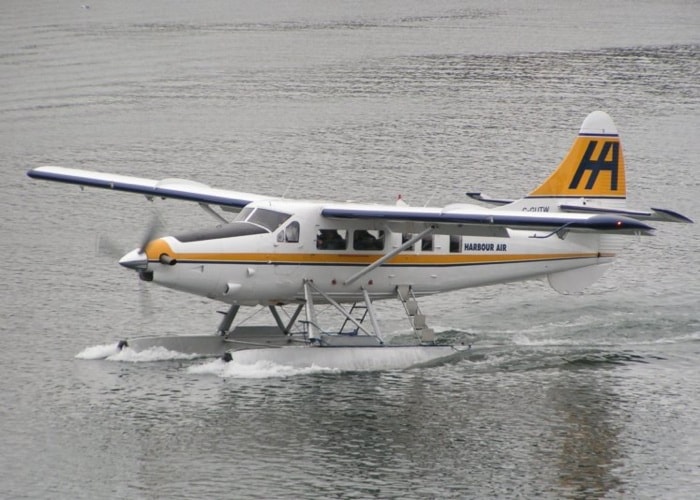All floatplane passengers and crew should be required to wear personal flotation devices (PFDs) throughout the flight, according to recommendations from the B.C. Coroners Service.
The findings come from a coroners' death panel review into seaplane safety after four crashes on the B.C. coast killed 23 people from 2005 to 2009.
The report recommends Transport Canada require PFD use at each stage of the flight by all on board and that seaplanes be equipped with emergency exits allowing rapid escape in water.
It says PFDs stored under a seat are extremely hard to retrieve and don in the critical seconds after a crash when occupants are trying to escape a submerged aircraft.
But commercial floatplane operators are divided on the use of life vests throughout flights.
Harbour Air/Westcoast Air executive vice-president Randy Wright said he and others in the industry fear a panicked passenger might inflate a PFD inside a submerged plane, trapping himself and others.
"You've got to get people out with the life jackets and without inflating it inside or they'll trap themselves," he said.
Current PFDs in use would not hold up to continuous wear either, the panel heard.
But the report argues those concerns can be addressed and don't detract from the overall life-saving potential of mandatory life vest use.
Transport Canada has the final say on whether PFD use would be required and Wright said he is working with federal authorities on how it might be done.
The 19 recommendations also call for other upgrades, including satellite tracking systems and power shut-off switches to reduce the chance of fire after a crash.
Wright said Harbour Air has already implemented many recommendations, including lighted strips leading to exits and pop-out windows to aid escape.
More than 200 people died in a total of 111 fatal plane crashes in B.C. during the 2000s. Commercial flights accounted for more than a third of the incidents.
Three of the four crashes considered in the review involved flights that were carrying workers to remote job sites on the coast.
Five died in a crash in the Knight Inlet area in 2005, another five perished in 2008 when a plane en route to a logging operation hit a steep slope near Port Hardy and another seven heading that same year to a worksite at Toba Inlet died when their plane crashed at South Thormanby Island.
In 2009, six more passengers died when a commercial flight hit the water at Lyall Harbour on Saturna Island.
The pilot and a seventh passenger escaped from that rapidly sinking plane, but the other occupants drowned inside. Only two of the four doors could be opened.
"Of the seven life vests available onboard, five had remained in their stowage pouches under the seats, while two were found outside of their pouches, but had not been utilized," the report says.
Sites of four floatplane crashes between 2005 to 2009 that were the subject of the review.
